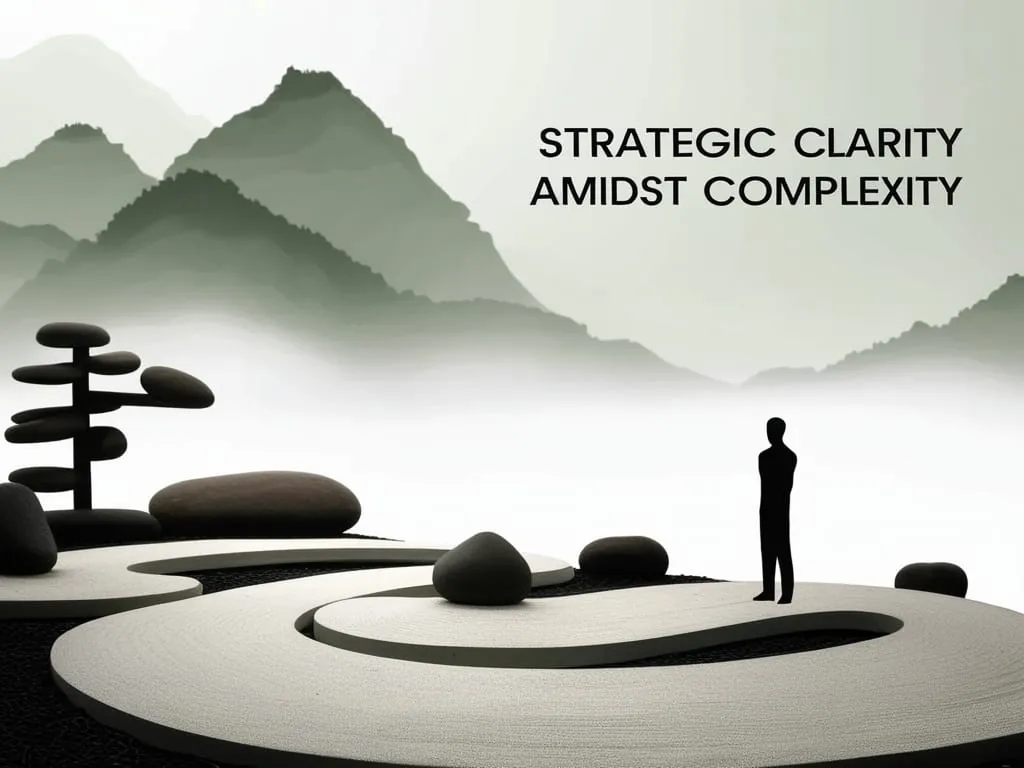Strategic Inaction: The Underrated Superpower of Great Leaders
Leadership isn't always about taking action. Sometimes, it's about knowing when to hold back. This might sound counterintuitive, but strategic inaction can be a game-changer for leaders who want to drive their organizations to success.
Think about it. We often praise leaders who are always on the go, making decisions left and right. But what if I told you that some of the most effective leaders know when to step back and do nothing? It's not about being lazy or indecisive. It's about being smart and strategic.
Let's take a closer look at how this works in practice. Imagine you're leading a team that's stuck on a tough problem. Your first instinct might be to jump in and start barking orders. But a wise leader might take a different approach. They might step back, observe, and let the team wrestle with the issue for a while. Why? Because this gives team members a chance to flex their problem-solving muscles and take ownership of the solution.
This approach isn't just about problem-solving. It's about empowering your team. When you're not micromanaging every little detail, you're giving your team members the space to take risks and learn from their mistakes. It's like teaching a kid to ride a bike. At some point, you've got to let go of the seat and let them pedal on their own. Sure, they might fall a few times, but that's how they learn.
Now, you might be thinking, "But won't this make me look weak or uninvolved?" Not at all. In fact, it can make you more relatable and approachable. Think about those executives who always get the best offices and fancy perks. Does that make them better leaders? Or does it just create a sense of superiority that can demotivate other employees?
A leader who practices strategic inaction might choose to work in an open office space or let team members pick their own desks. It's a simple act, but it can go a long way in breaking down barriers and fostering a culture of equality and collaboration.
But let's be clear: strategic inaction isn't about never taking action. It's about knowing when to act and when to hold back. It's about creating clear calls to action when necessary. For example, if your company is going through a big change, you might need to paint a clear picture of what the future looks like and why the current situation isn't cutting it anymore. By providing data and metrics that show the performance gaps, you can rally your team behind the new initiative.
This approach goes hand in hand with fostering a culture of continuous improvement. Leaders who practice strategic inaction are open to feedback and willing to challenge their own ideas. They create an environment where everyone is encouraged to think about what's best for the company, not just what the boss thinks.
And you know what? This approach can lead to some serious financial benefits. Companies that invest in leadership development and human capital often see higher returns and improved productivity. Just look at what Steve Jobs did at Apple. By fostering a culture of innovation and continuous improvement, he transformed the company into a global powerhouse.
But here's the thing: strategic inaction isn't just about what you do (or don't do). It's also about how you communicate. Effective leaders promote two-way communication. They understand that not all answers come from the top and that employees often have valuable insights. By listening and valuing these insights, leaders can boost employee engagement and motivation.
In practice, this might mean holding regular check-ins where employees can share their thoughts and feedback. It shows that their opinions matter and are valued, which can lead to breakthrough innovations and improved team performance.
Now, let's talk about motivation. Strategic inaction doesn't mean being inactive. It means being selective and thoughtful in your actions. Leaders who motivate and inspire their teams often do so by setting clear visions and goals. They understand that motivation comes from within and that by empowering their teams, they can achieve far more than they could alone.
For instance, a leader might set stretch goals that seem impossible at first but are achievable with hard work and innovation. By taking on these challenges themselves and showing their team that hard work pays off, leaders can inspire their teams to strive for excellence.
But let's be real: no leader is perfect. Mistakes happen. It's how leaders learn from these mistakes that sets them apart. Strategic inaction involves being willing to grade yourself and invite others into the feedback process. This openness to feedback helps leaders become better and set a better example for their teams.
Imagine you make a decision that doesn't pan out as expected. Instead of trying to cover it up or blame others, you acknowledge the mistake, explain what went wrong, and invite the team to provide feedback. This approach not only builds trust but also fosters a culture of transparency and accountability.
At the heart of all this is a strong vision. A clear and compelling vision is the backbone of any successful organization, and strategic inaction plays a crucial role in building and maintaining this vision. Leaders who know when to act and when to refrain from action can create a vision that truly inspires their teams.
Think about Steve Jobs again. He had a crystal-clear vision for Apple's future, which he communicated effectively to his team. This vision wasn't just about what Apple would achieve but also about how it would achieve it. It inspired the team to work towards a common goal.
Finally, let's talk about empathy and self-awareness. Strategic inaction requires both. Leaders who understand their own strengths and weaknesses can make better decisions about when to act and when to step back. They also understand the emotional dimension of organizational change and can address the concerns and questions of their team members.
In practice, this might mean acknowledging the challenges of change and explaining the rationale behind the decisions. By showing empathy and understanding, leaders can build trust and ensure that their teams are fully on board with the vision.
So, there you have it. Strategic inaction isn't about being passive or inactive. It's about being thoughtful, strategic, and mindful in your leadership approach. By knowing when to act and when to refrain from action, leaders can foster a culture of innovation, continuous improvement, and empowerment.
This approach can lead to improved productivity, increased revenue, and a stronger company culture. Ultimately, it can drive the organization towards greater success. So next time you're faced with a challenge, take a moment to consider whether action or inaction is the best course. Sometimes, the most powerful thing you can do as a leader is nothing at all.






